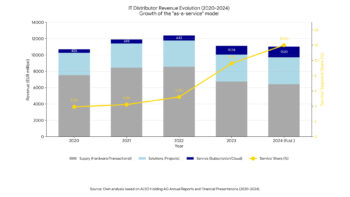At the finish of 2025, the IT job market in Poland is entering a phase of cautious selective recruitment. According to the latest ManpowerGroup Employment Outlook Survey, 38% of companies plan to increase hiring in Q4, but at the same time 27% are considering reductions and 32% intend to maintain current employment levels. The hiring outlook is +12% – the lowest in the industry for all of 2025, showing a cooling off after the intense demand of previous years.
The main motivations of recruiters remain developmental: almost half of companies (48%) point to organisational expansion and 39% to technological advances generating new positions, especially in the areas of AI, cyber-security, cloud, data engineering or low-code. In the background, the pressure to diversify competencies and enter new markets remains – although these are more strategic than short-term goals.
However, in parallel, there is a growing group of defensive companies. Staff reductions are mainly driven by economic challenges (31%) and process automation (31%), which signals that some organisations are entering a phase of cost optimisation and project extinguishment. 25% of IT companies say they have no plans to replace departing employees, which can be read as growing financial caution after a period of overheating in the labour market.
Although the deceleration in momentum is evident, the IT job market is not headed for stagnation. Demand for specialists in critical domains – particularly security, cloud infrastructure and data analytics – remains above the market average. Salaries for such roles remain stable: PLN 10-15k gross for mid-levels and even PLN 25-40k for experts and managers.
Against a global backdrop, the Polish sector is part of the ‘technological selection’ trend: companies are cutting back on mass recruitment, but investing in competencies that are key to business scalability and resilience. The IT industry may enter 2026 no longer with the question “who to hire?”, but “what to invest in: people or automation?”.
This shift in emphasis from quantity to quality of staff may prove to be one of the most important turning points in the history of the Polish IT market.












